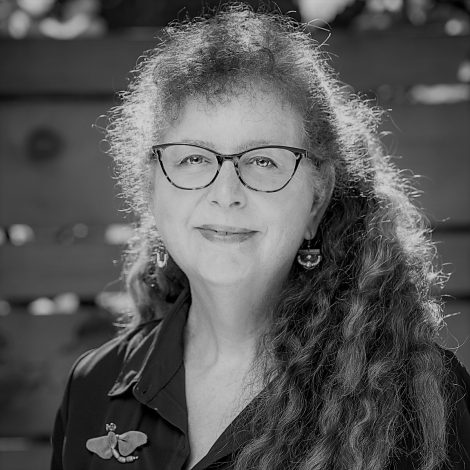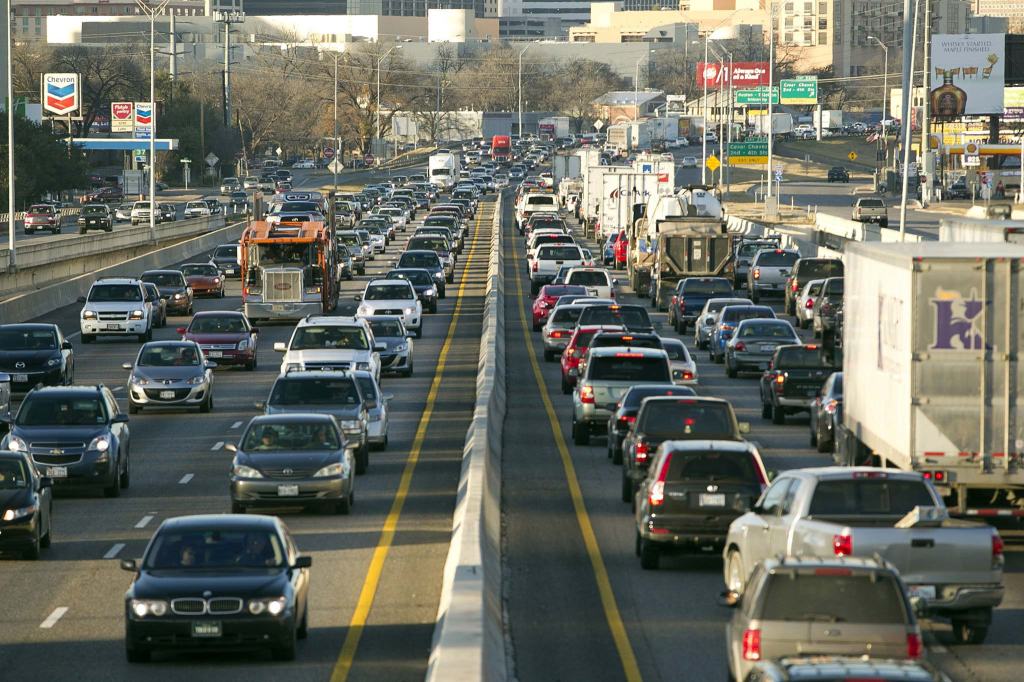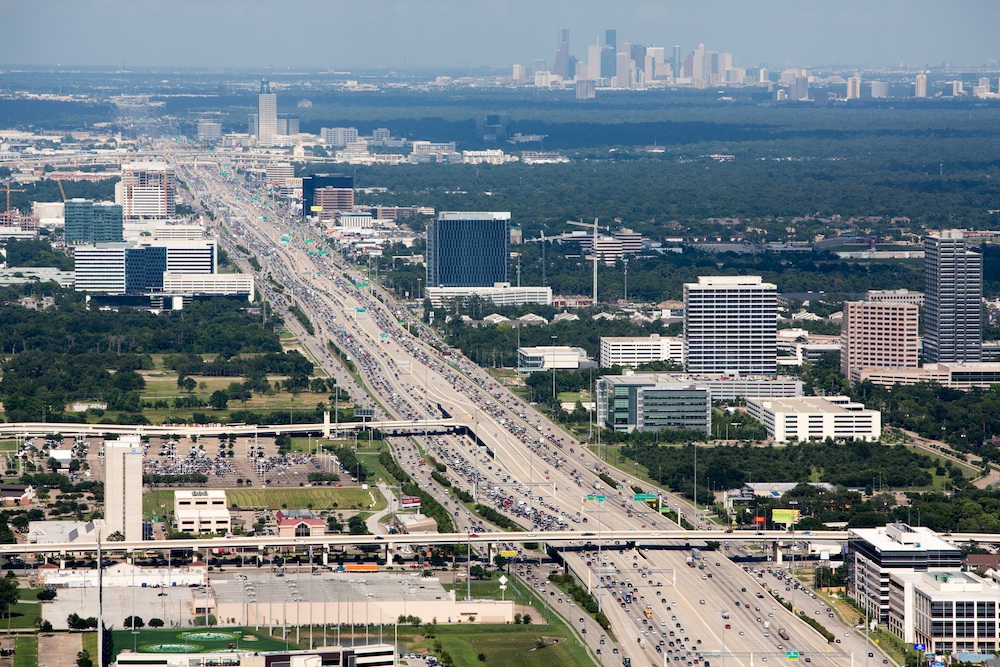
Heyden Black Walker is a former Walking College Fellow, current Walking College mentor and a force to be reckoned with when it comes to “sinking” harmful urban highways. Planning Director at Black + Vernooy and co-founder of Reconnect Austin, Heyden sat down with us virtually to provide an in depth and behind-the-scenes look at the trials, tribulations, victories and takeaways around her work in trying to bury and repurpose Interstate 35 in Austin, Texas.
AW: When and how did this work to address Austin’s Interstate-35 start?
Heyden: We have been working on this project for 9 years. Sinclair Black, who is the inspiration behind this project, has been working to get a better solution for I-35 for over 20 years.
AW: How did you first get involved in this, what was the first step?
Heyden: I work for Sinclair Black, who is also my dad. He called me up in 2012 and said “why don’t you come to work for me and sink I-35?” I do have a planning degree, but I honestly thought that after a couple of weeks the gig would be up. But over time we have educated ourselves, shared information as widely as we could, developed an amazing team of leaders, and built up our capacity to move forward. Our movement reminds me of the Walking College, we each keep working on building capacity on the ground and bringing people along.
AW: What is the end solution / main goal for Reconnect Austin?
Heyden: Reconnect Austin is a grassroots campaign to bury I-35 through the urban core of Austin (Lady Bird Lake to Airport Blvd.) and repurpose this vital corridor as public space and developable land. Our vision is to create a new, humanized boulevard, reconnecting central neighborhoods to Downtown, State Capitol Complex, and UT Austin, all while mitigating air and water pollution, and providing an economic boost in the form of new, centrally located housing and businesses.

AW: Why do you care about highway removal?
Heyden: Highways across the country are coming to the end of their lifespans. We have this once in a lifetime opportunity to decide what to do with these corridors. If we just rebuild them as they exist today we will have to live with that for the next 70 years.
AW: What are some of the social and racial implications around the origination of the highway and ultimate removal or “reconnection”?
Heyden: It really goes back to city plans in the 1920’s that intentionally segregated people. In Austin, the 1928 Plan said that all Black Austinites had to live in one 6 square mile district. When redlining happened in the 1930’s East Austin was redlined. Then, in the 1950s and ‘60’s I-35 was put at the edge of East Austin, destroying local homes and businesses, further depressing property values, and walling the community off from the rest of the city.
You can look at the historic redlining maps of almost any American city and see where future highways would be used to either plow through neighborhoods or cut them off from the rest of the city.
I don’t think reconnection can happen correctly without safeguards in place. Highways depress land values – do you know anyone who chooses to live next to a highway if they have other options? If you take that negative element away, land values rise. That can be beneficial for a city’s budget, but very harmful for communities that are in danger of displacement.

AW: Can you relate this at all to the work of Reconnect Rondo?
Heyden: Reconnect Rondo is doing such a great job, we admire them from afar. They are further along in this discussion and the way they are thinking about what goes on the cap, and making sure those are things the community actually wants, is inspiring.
AW: When did you first learn about the damage that highways have done to communities?
Heyden: Over the last 9 years I have continued to learn and understand more and more about the damage highways do, especially within cities. When we first started this work it felt like we only had a few allies who were really thinking about these issues. Today there are groups all over the country fighting bad highway designs and advocating on behalf of their communities.
AW: How did the Walking College lay potential groundwork for addressing issues such as this in your work? Do you feel the Walking College helped to prepare you?
Heyden: Yes, absolutely. The Walking College helped me tremendously. It helped me fill in education gaps, it helped me build a broader network, and honestly it helped me see that fighting highways is a critical piece of walkability. I used to feel like I was operating at 2 radically different scales: I-35 and the walkability for the rest of the city. Now I see them more as one issue and many walking advocates in Austin are helping with our efforts.
AW: How long will this project take?
Heyden: Depends on who you ask. TxDOT says they want to start construction in 2025. They plan to completely tear out I-35 through the urban core of the city and completely rebuild it. Today it is 12 lanes, TxDOT wants to build 20. There is growing awareness from a lot of people that transportation is the single largest source of greenhouse gases and we should NOT be building more road capacity to induce more driving.
AW: What have been the biggest barriers so far?
Heyden: The way we modified cities to make them totally dependent on driving. People don’t really remember cities before our streets were dominated by cars. Although people do spend time and money visiting places that are centered on humans.
Another huge barrier is the highway industrial complex. There is a system of funding and approving highways that is very ingrained and there are lots of people who make fortunes off the system. I recently rewatched “Taken for a Ride,” which is about the intentional destruction of streetcars in our cities by a shell company funded by GM, Standard Oil, Phillips Petroleum, Firestone and others. The film shifts to highways about ½ way through because when you make everyone dependant on cars then you sell them on the idea that they have to have highways to get around.
There are LOTS of other barriers, like a state Department of Transportation with $13 billion / year to spend on “transportation” and a legislature that restricts 97% of that budget to highways.
AW: Can you share tips for other equitable, accessible, walkable community/mobility justice advocates and professionals around how to address highway removal from an organizing, planning and advocacy lens? Based on what you’ve learned so far?
Heyden: That’s a tough one…. If you really want to advocate for highway removal, you should be in contact with the Congress for the New Urbanism (CNU). They have two initiatives: Highways to Boulevards and Freeways Without Futures.
Then buckle up, because DOTs have billions of dollars and thousands of highly paid consultants. They will hold hundreds of meetings, but there is not really anything that says they have to listen. The National Environmental Policy Act (NEPA) is supposed to help give local communities a voice in this process, but it doesn’t do a very good job of that. For example, Austinites have been calling for a narrower I-35 footprint for 9 years. State politicians and decision makers have been promising “no wider, no higher” for years. But two weeks ago TxDOT released their plans to widen I-35. They will condemn 32 acres and bulldoze 142 homes and businesses.

AW: How important is having a network, team, stakeholders in aiding momentum/pressure on this action?
Heyden: Extremely important. I rely heavily on a network of people who are inspired to advocate for something better. Even groups that may be proposing different solutions are working together because we recognize that we may not each get everything we want, but we can certainly do better than a giant 20 lane highway through the heart of Austin.
AW: Who are the most important types of people/orgs/stakeholders that advocates can connect with to push for highway removal efforts in their area?
Heyden: CNU is a huge help, and they can help connect you to other freeway fighters. I’m happy to talk with people too. I find that you have to convince people that widening the highway only induces demand and will never solve congestion. So I also use a lot of data. Transportation for America’s report, showing that in every U.S. city where they added highway lanes congestion actually got worse is a powerful tool.
AW: Who/what keeps you inspired?
Heyden: All the great people I get to work with. I get an incredible amount of assistance and support from other advocates. I also love when the press runs stories about these issues to raise awareness. There is also a growing Freeway Fighters national network. It helps tremendously to know that others are out there doing the same thing. Many issues are similar and sharing information is powerful.
AW: What final wisdom in perseverance can you share with other advocates in relation to highway removal? What can others can glean from your work on Reconnect Austin?
Heyden: Stay with it and don’t let the DOTs beat you down. You have tools they don’t. For example, you can talk to the press when they have to coordinate with their public information office. Another example, you can probably find people who can draw and explain things to the public much better than DOTs usually do. Use social media. And keep questioning them. The people inside DOTs are usually nice folks, but they are pushing an agenda that is set by state politicians who in turn receive big donations from the lobbyists and contractors that make money off the system. The system needs to change, or these projects never will.
Since WWII there has been a history of prioritizing cars, not people, in our built environment. No one has to be anti-car to want to work toward more balanced public spaces. Vision Zero has been very influential in my work. When you begin to understand the cost in human life because of the way our transportation system is designed, it helps inspire you to change the system. Sometimes it feels like a constant struggle, but I see the changes happening all the time on Austin’s streets: new leading pedestrian intervals, new cross walks, road diets, better sidewalks, more safe places to cross busy streets, more people asking for safe streets, pedestrian refuge islands, etc.

Highways cause a lot of problems within cities, including creating a significant barrier that is very difficult, dangerous, and uncomfortable to cross. We already know how to solve many of those problems, it is being done all around the world, we just need the political will to do these projects differently. At the very least we need elected officials who understand that.
Want to learn more about Reconnect Austin and highway removal? Here are some great additional resources:
- Reconnect Austin‘s website
- Reimagining I-35 Report
- Videos on the project
- No New Roads: A Better Choice for Austin / Strong Towns Webinar
- “Mitigating the Damage from Highways in Urban Areas” – highlights key precedent projects around the world.
- Heyden moderated this panel at CNU29
- We say NO to TxDOT’s plans for expanding I-35 through Austin – an action alert
- Local press about the issues:
- Most current/recent press can be found here on Reconnect Austin‘s site
- TxDOT Slams Brakes On Proposals To Shrink I-35 Footprint
- TxDOT’s Proposals For I-35 Would Raze Dozens Of Properties In Central Austin
- Austin at Large: Ain’t No Highway Wide Enough
- If They Can Tear Down This Highway in Texas… Yes, Texas!